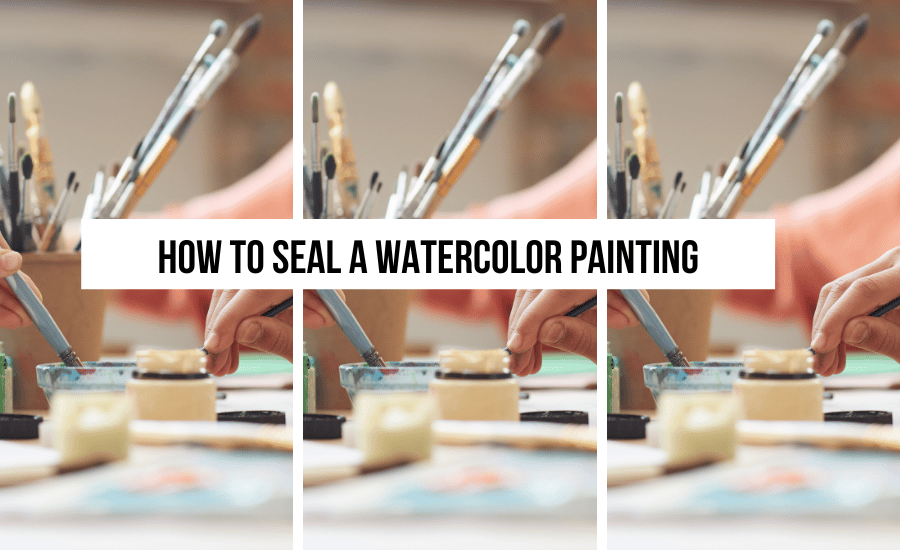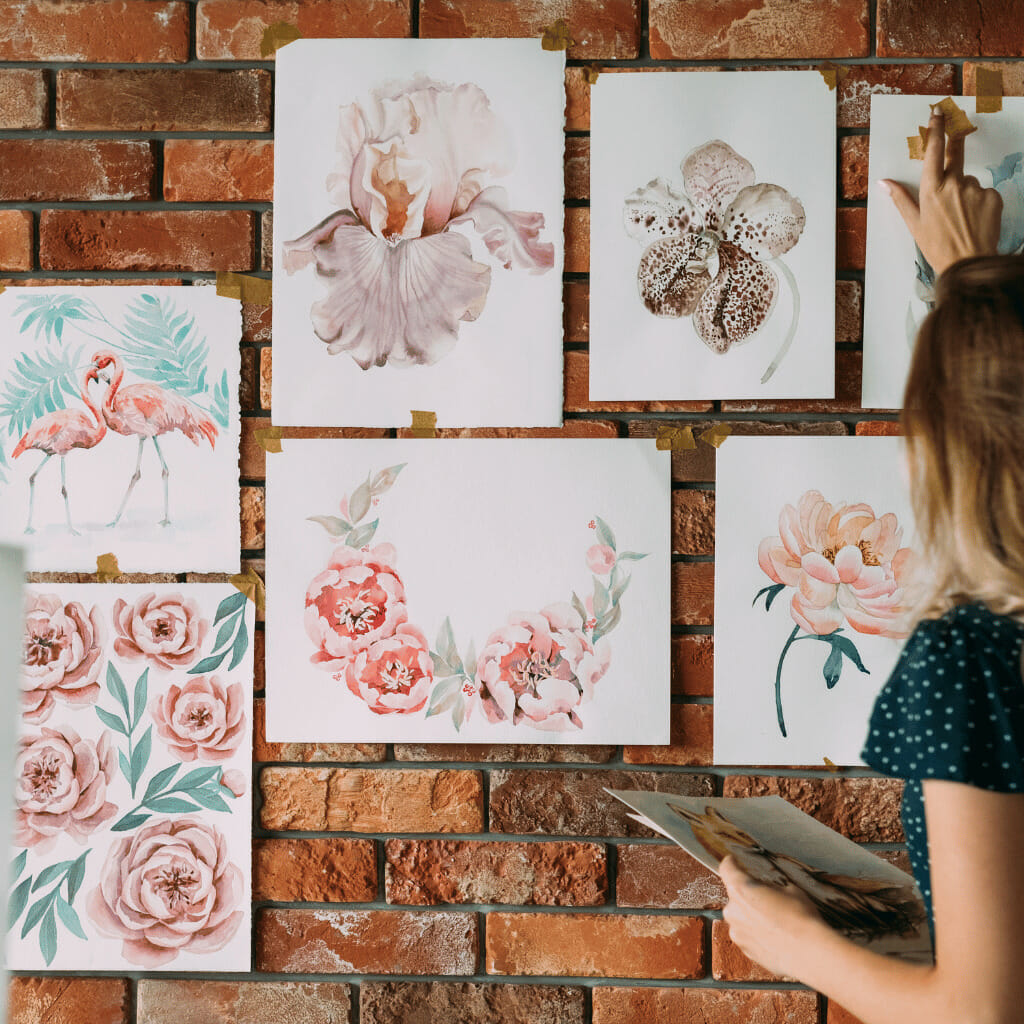Watercolor painting is a delicate art form that requires a lot of skill and patience. But once you’ve created a beautiful watercolor painting, the next step is to seal it properly to protect it from damage and fading over time. Sealing a watercolor painting can be a bit tricky, as you don’t want to ruin the delicate pigments or texture of the paper. Luckily, with the right tools and techniques, you can seal your watercolor painting with ease and preserve its beauty for years to come.
In this step-by-step guide, we’ll walk you through the process of sealing a watercolor painting, from choosing the right sealant to applying it correctly. Whether you’re a beginner or a seasoned pro, this guide will give you the knowledge and confidence you need to seal your watercolor paintings like a pro. So, let’s get started!
Home > Etsy Biz > Seal A Watercolor Painting
DISCLOSURE: This is a sponsored post. Through my links, I may receive a commission if you decide to make purchases at no cost for yourself! Check out our disclaimer for more info on how it works.

What is sealing a watercolor painting?
Sealing a watercolor painting refers to the process of applying a protective layer to the surface of the painting. The sealant creates a barrier that prevents moisture, dust, and other harmful elements from damaging the painting.
Sealing a watercolor painting is particularly important because watercolor pigments are more delicate and prone to fading than other types of paint. Without proper sealing, your watercolor painting may become damaged, discolored, or faded over time.
Benefits of sealing a watercolor painting
There are several benefits to sealing a watercolor painting. First and foremost, sealing your painting will help to protect it from damage and fading over time. The sealant creates a barrier that prevents moisture, dust, and other harmful elements from damaging the painting.
Sealing your painting also helps to preserve the colors and pigments, keeping them vibrant and true to life. Additionally, sealing a watercolor painting can help to enhance the texture and appearance of the painting, making it look more professional and polished.

Types of sealants for watercolor paintings
There are several different types of sealants that you can use to seal a watercolor painting. The most common types include:
Archival Varnish
Archival varnish is a type of sealant that is specifically designed for use with watercolor paintings. It is a non-yellowing, clear varnish that provides a protective barrier over the painting. Archival varnish is formulated to be long-lasting and fade-resistant, making it an ideal choice for preserving your watercolor painting.
UV-Protective Spray
UV-protective spray is another type of sealant that is commonly used to protect watercolor paintings. This type of spray creates a clear, protective layer over the painting that helps to prevent fading and discoloration caused by UV rays. UV-protective spray is easy to apply and dries quickly, making it a convenient choice for sealing your watercolor painting.
Fixative Spray
Fixative spray is a type of sealant that is often used to protect charcoal, pastel, and graphite drawings. However, it can also be used to seal watercolor paintings. Fixative spray creates a clear, protective layer over the painting that helps to prevent smudging and fading. It is important to note that fixative spray can alter the appearance of the painting, so it should be used with caution.
Materials needed for sealing a watercolor painting
Before you begin sealing your watercolor painting, you’ll need to gather the necessary materials. Here’s what you’ll need:
– Archival varnish, UV-protective spray, or fixative spray
– Paintbrush or spray bottle
– Clean, dry workspace
– Protective gloves
– Mask or respirator (if using spray sealant)
– Newspaper or drop cloth to protect your workspace
Step-by-step guide to sealing a watercolor painting
Now that you have all of the necessary materials, it’s time to begin sealing your watercolor painting. Follow these steps to seal your painting like a pro:
1. Choose the right sealant for your painting. Archival varnish is best for long-term protection, while UV-protective spray is ideal for paintings that will be displayed in direct sunlight. Fixative spray is a good choice if you want to protect your painting from smudging or if you want to alter the appearance of the painting slightly.
2. Prepare your workspace by laying down newspaper or a drop cloth to protect the surface from overspray or drips.
3. Put on protective gloves and a mask or respirator (if using spray sealant).
4. Shake the can/bottle of sealant well to ensure that the contents are mixed properly.
5. Hold the spray bottle/can at least 8 inches away from the painting and spray a light, even coat over the entire surface of the painting. If you’re using a paintbrush, dip the brush into the sealant and apply a thin layer to the painting, working in long, even strokes.
6. Allow the first coat to dry completely before applying a second coat. If you’re using a spray sealant, hold the can at least 8 inches away from the painting and spray another light, even coat over the entire surface of the painting. If you’re using a paintbrush, apply a second thin layer of sealant to the painting, working in long, even strokes.
7. Allow the second coat to dry completely before handling the painting.
Tips for sealing a watercolor painting
Here are a few tips to keep in mind when sealing your watercolor painting:
- Always test the sealant on a small, inconspicuous area of the painting before applying it to the entire surface.
- Apply the sealant in a well-ventilated area to avoid inhaling toxic fumes.
- Apply the sealant in thin, even coats to avoid drips or bubbles.
- Use a soft-bristled paintbrush to apply the sealant if you’re concerned about overspray or if you want more control over the application.
- Don’t touch the surface of the painting while it’s drying, as this can leave fingerprints or smudges.
Common mistakes to avoid when sealing a watercolor painting
Here are a few common mistakes to avoid when sealing your watercolor painting:
- Applying the sealant too thickly, which can cause drips, bubbles, or discoloration.
- Using a sealant that isn’t designed for watercolor paintings, which can cause discoloration or damage to the painting.
- Not allowing the sealant to dry completely between coats, which can cause the sealant to crack or peel over time.
- Not protecting your workspace from overspray or drips, which can damage your work surface or other nearby objects.
Frequently asked questions about sealing watercolor paintings
Q: How long should I wait before sealing my watercolor painting?
A: Wait until the painting is completely dry before sealing it. This can take anywhere from a few hours to a few days, depending on the size and thickness of the painting.
Q: How many coats of sealant should I apply?
A: It’s best to apply at least two thin coats of sealant, allowing each coat to dry completely before applying the next.
Q: Can I use hairspray to seal my watercolor painting?
A: No, hairspray is not an appropriate sealant for watercolor paintings. It can cause discoloration and damage to the painting over time.
Conclusion
Sealing a watercolor painting is an important step in preserving its beauty and protecting it from damage over time. By following the steps outlined in this guide and using the right materials and techniques, you can seal your watercolor paintings like a pro. Whether you’re a beginner or a seasoned pro, sealing your watercolor paintings is a skill that every watercolor artist should master. With a little practice and patience, you can ensure that your watercolor paintings remain vibrant and beautiful for years to come.

+ show Comments
- Hide Comments
add a comment